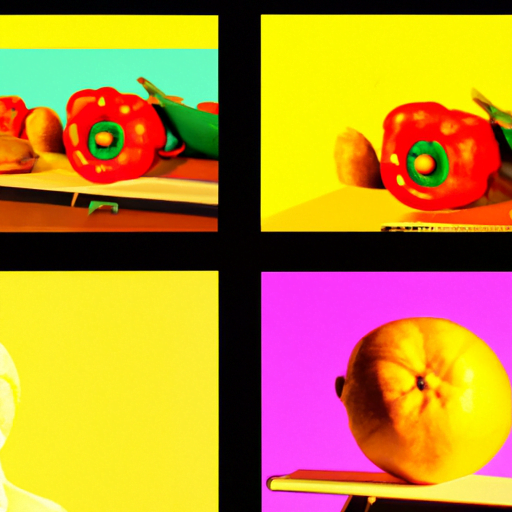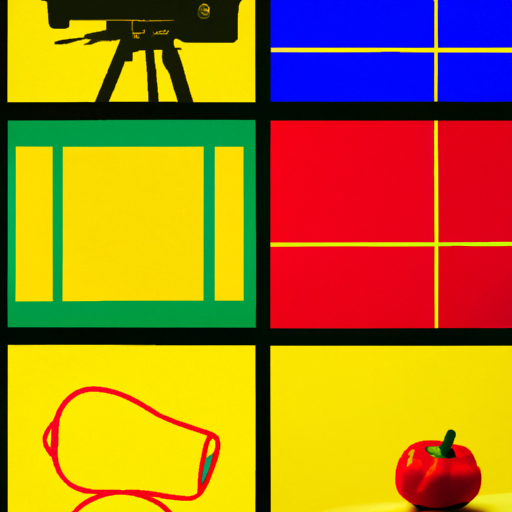
-
Table of Contents
- The Art of Visual Balance: Creating Equilibrium in Design
- Understanding Visual Balance
- Symmetrical Balance
- Asymmetrical Balance
- Radial Balance
- Techniques for Achieving Visual Balance
- 1. Size and Scale
- 2. Color and Contrast
- 3. Texture and Pattern
- 4. Negative Space
- The Impact of Visual Balance in Design
- 1. Enhances User Experience
- 2. Communicates Hierarchy and Organization
- 3. Evokes Emotional Response
- Conclusion
The Art of Visual Balance: Creating Equilibrium in Design

Design is not just about aesthetics; it is about creating a harmonious and balanced composition that engages the viewer. Visual balance is a fundamental principle in design that ensures the elements within a composition are arranged in a way that feels stable and pleasing to the eye. In this article, we will explore the art of visual balance and how it can be achieved to create equilibrium in design.
Understanding Visual Balance
Visual balance refers to the distribution of visual weight within a composition. It is the arrangement of elements in a way that creates a sense of equilibrium and stability. When a design is visually balanced, it feels harmonious and comfortable to look at.
There are three main types of visual balance:
- Symmetrical Balance
- Asymmetrical Balance
- Radial Balance
Symmetrical Balance
Symmetrical balance, also known as formal balance, occurs when elements are arranged equally on either side of a central axis. It creates a sense of stability and order. A classic example of symmetrical balance is the human face, where the left and right sides are mirror images of each other.
One famous example of symmetrical balance in design is Leonardo da Vinci’s “Vitruvian Man.” The drawing depicts a man with his arms and legs spread out, fitting perfectly within a circle and a square. The symmetrical arrangement of the figure creates a sense of harmony and proportion.
Asymmetrical Balance
Asymmetrical balance, also known as informal balance, occurs when elements of different sizes, shapes, or colors are arranged in a way that creates equilibrium. It is achieved by distributing visual weight based on the perceived visual importance of the elements rather than their physical size or quantity.
An excellent example of asymmetrical balance is Vincent van Gogh’s painting “Starry Night.” The composition features a large, dominant moon and swirling stars on one side, balanced by a small village and a cypress tree on the other side. Despite the uneven distribution of elements, the painting feels visually balanced due to the careful arrangement of colors and shapes.
Radial Balance
Radial balance occurs when elements radiate outward from a central point. It creates a sense of movement and energy. Radial balance is often found in circular or spiral designs, such as mandalas or sunflowers.
The logo of the Olympic Games is a famous example of radial balance. The five interlocking rings radiate from a central point, representing the unity of the five continents participating in the games. The arrangement of the rings creates a dynamic and visually balanced composition.
Techniques for Achieving Visual Balance
Now that we understand the different types of visual balance, let’s explore some techniques for achieving it in design:
1. Size and Scale
Elements of different sizes can be used to create balance. Larger elements tend to carry more visual weight, while smaller elements carry less. By strategically placing larger and smaller elements within a composition, designers can achieve visual balance.
For example, in a poster design, a large headline can be balanced by smaller supporting text and images. The contrast in size creates a sense of equilibrium.
2. Color and Contrast
Color can also be used to create visual balance. Bright, saturated colors tend to carry more visual weight than muted or neutral colors. By balancing the distribution of colors within a composition, designers can achieve equilibrium.
For instance, in a website design, a vibrant and colorful hero image can be balanced by a clean and minimalistic color scheme for the rest of the page. The contrast in color creates a visually balanced composition.
3. Texture and Pattern
Texture and pattern can add visual interest to a design and also contribute to its balance. By distributing different textures or patterns throughout a composition, designers can create a sense of equilibrium.
For example, in a brochure design, a textured background can be balanced by clean and simple typography. The contrast in texture creates a visually balanced layout.
4. Negative Space
Negative space, also known as white space, is the empty space around and between elements in a design. It plays a crucial role in achieving visual balance. By strategically using negative space, designers can create a sense of equilibrium and highlight the main elements within a composition.
Apple’s product packaging is a great example of using negative space to create visual balance. The clean and minimalistic design allows the product to stand out while maintaining a sense of harmony and balance.
The Impact of Visual Balance in Design
Visual balance is not just about creating aesthetically pleasing designs; it also has a significant impact on the viewer’s perception and experience. Here are some reasons why visual balance is crucial in design:
1. Enhances User Experience
Visual balance helps create a comfortable and enjoyable user experience. When a design is visually balanced, it feels harmonious and easy to navigate. Users are more likely to engage with a design that provides a sense of equilibrium.
2. Communicates Hierarchy and Organization
Visual balance can be used to communicate hierarchy and organization within a design. By strategically arranging elements based on their importance, designers can guide the viewer’s attention and convey the intended message effectively.
3. Evokes Emotional Response
Visual balance can evoke specific emotional responses from the viewer. A well-balanced design can create a sense of calmness, stability, or excitement, depending on the desired outcome. By understanding the psychological impact of visual balance, designers can create designs that resonate with their target audience.
Conclusion
Visual balance is a fundamental principle in design that plays a crucial role in creating harmonious and engaging compositions. Whether through symmetrical balance, asymmetrical balance, or radial balance, designers can achieve equilibrium by strategically arranging elements based on their size, color, texture, and negative space. Visual balance enhances user experience, communicates hierarchy, and evokes emotional responses. By mastering the art of visual balance, designers can create impactful and visually appealing designs that captivate their audience.
